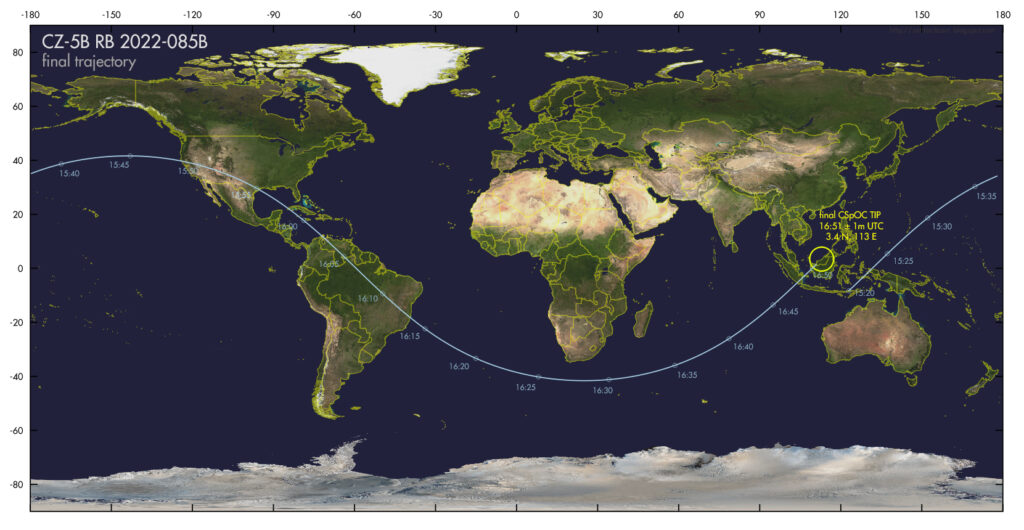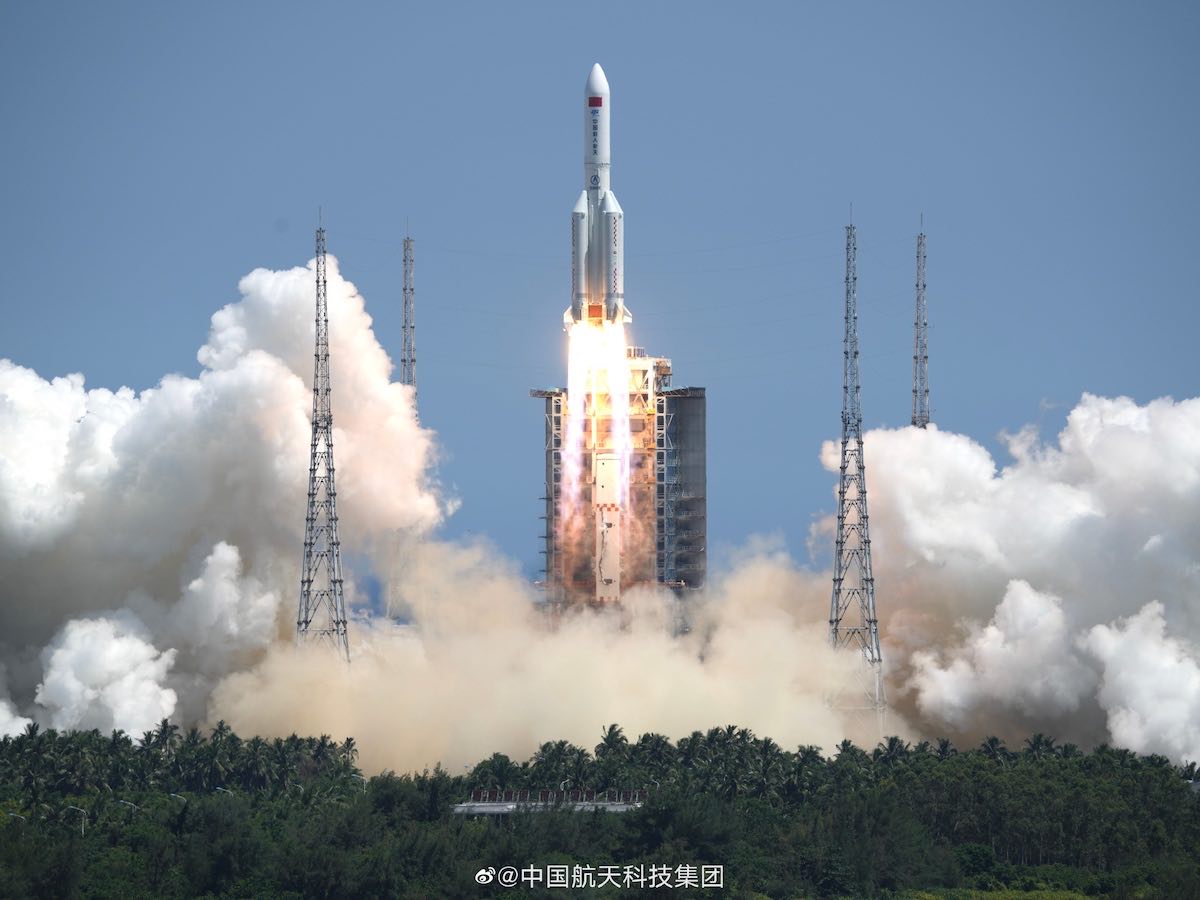On July 30, the central stage of the Long March 5B rocket entered the Earth’s atmosphere over Southeast Asia. According to the Chinese National Space Administration, its debris fell into the Sulu Sea. It is located in the Pacific Ocean between the Philippines, Malaysia and Indonesia.
Shortly after this event, several videos made by residents of Indonesia and Malaysia appeared on the network. They demonstrate the entry into the atmosphere and the decay of an object. Based on its speed of movement and behavior, it is almost certainly the Long March 5B stage. At the moment, it is unknown whether all of its fragments fell into the sea, or some of them managed to reach land.
https://twitter.com/nazriacai/status/1553424586624335872
Space “Russian roulette”
As a rule, the central (first stages), which are the largest component of launch vehicles, do not gain the first space speed and return to Earth immediately after launch. Approximate areas of their fall are closed in advance to air traffic and shipping.

However, Long March 5B is an exception. During missions with the removal of cargo to low Earth orbits, its central stage is gaining enough speed to stay in space. Its length is 30 meters, diameter is 5 meters, weight (without fuel) is about 21 tons. The last indicator is comparable to the mass of the Soviet Salyut-7 orbital station. At the same time, the Long March 5B engines do not have the ability to re-enable. And this means that engineers have no way to bring it out of orbit over a pre-selected site.
Thus, each launch involving Long March 5B turns into a kind of “Russian roulette”. It is only known in advance that its central stage will enter the atmosphere in the area between 41° north and 41° south latitude. It is usually not possible to make a more accurate forecast due to many factors that can affect the behavior of the stage. And just a minute error in calculating the time means that the point of entry into the atmosphere will shift by 500 km.

The good news is that most of the stage usually burns up in the atmosphere. But some of its fragments (for example, engines) can reach the surface. This, for example, happened in 2020, when several fragments of the Long March 5B fell on the territory of Ivory Coast.
Criticism of the Chinese authorities
It is worth noting that NASA has already criticized the Chinese authorities several times for the lack of efforts to actively de-orbit and flood rocket stages in safe areas. This case was no exception. The NASA administrator condemned the Chinese authorities for again not providing specific information about the flight path of the Long March 5B and its stage, which could allow a better assessment of the potential risks of its fall.
The next “Russian roulette” with the participation of the central stage “Long March 5B” will take place in the autumn of this year. In October, the rocket will send a second laboratory module for the Tiangong station into orbit.
Follow us on Twitter to get the most interesting space news in time
https://twitter.com/ust_magazine
